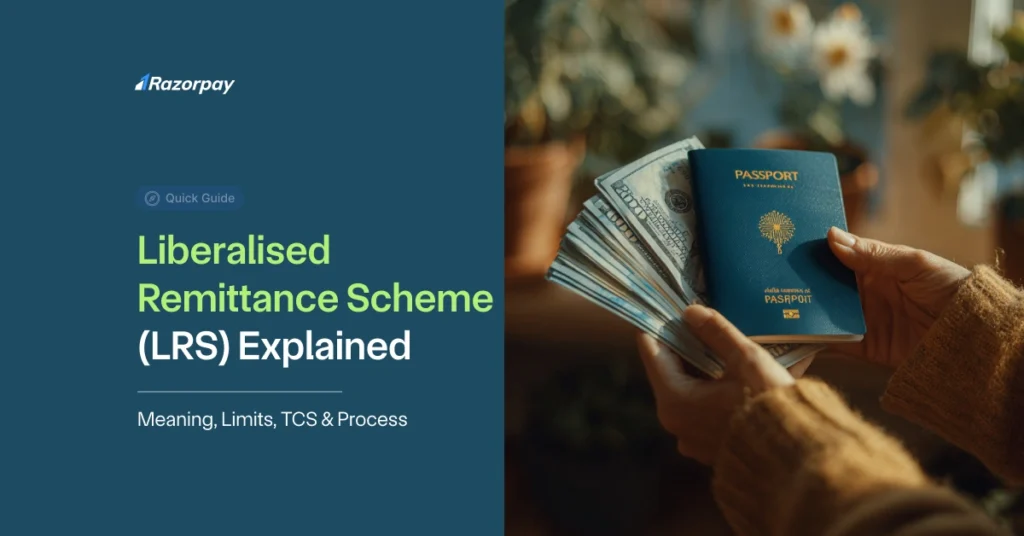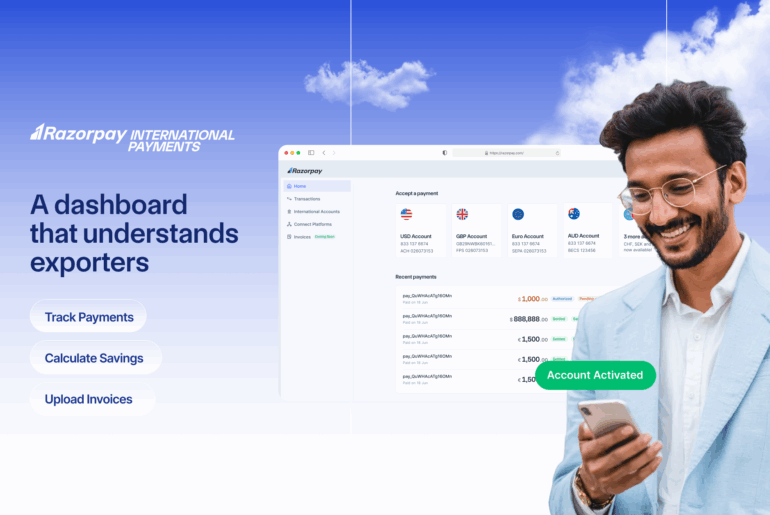Be it traveling abroad for education, medical treatment, business, or pleasure, things have become a lot smoother than before. Flights and hotels are easy to book, popular destinations are suggested on the web, and so is access to currency conversions.
Even if you’re planning to invest abroad, make international money transfers from India, gift someone staying in another country, or planning to maintain your family or assets abroad, the processes have smoothened out. Thanks to the Liberalised Remittance Scheme under the Foreign Exchange Management Act (FEMA) 1999, which paves the way for Indian residents to make international remittances.
So, what exactly is the Liberalised Remittance Scheme? Here’s all that you need to know:
Table of contents
|
What is Liberalised Remittance Scheme?
The Liberalised Remittance Scheme (LRS), introduced by the Reserve Bank of India (RBI) in 2004 under the Foreign Exchange Management Act (FEMA) 1999, empowers Indian residents to send up to $ 2,50,000 abroad annually (April to March).
What are the benefits of Liberalised Remittance Scheme?

- LRS enables diversification of investment portfolios by allowing individuals to invest in foreign assets such as stocks, bonds, and real estate.
- It supports overseas education, facilitating remittances for tuition fees, living expenses, and books.
- Individuals can use LRS for remittances related to medical treatment outside India, particularly for specialized healthcare not available domestically.
- Travel-related expenses, including tickets and hotel bookings.
- Entrepreneurs and businesses benefit from LRS as it permits investments in foreign businesses, start-ups, and joint ventures, fostering global business expansion.
- LRS allows individuals to make gifts or donations to family members or charitable organizations outside India.
What is permitted under the Liberalised Remittance Scheme?
All permitted transactions by Indian residents under LRS are categorized into either current account or capital account transactions.
Those transactions that do not affect their assets or liabilities outside India fall under current account transactions, while the rest are categorized as capital account transactions.
Indian residents can utilize foreign exchange for, among other purposes:
- Private visits
- Gifts or donations
- Employment
- Emigration
- Maintenance of close relatives
- Business travel
- Conferences
- Medical expenses
- Overseas education
What is prohibited under the Liberalised Remittance Scheme?

Remittance under LRS is not available for certain purposes including the purchase of lottery tickets, proscribed magazines, trading in foreign exchange abroad, and capital account remittances to countries flagged by the Financial Action Task Force (FATF).
Who can remit under the Liberalised Remittance Scheme?
The Liberalised Remittance Scheme (LRS) is exclusively for resident Indians, including minors, students, and sole proprietorship businesses, with no eligibility for corporations, partnership firms, Hindu Undivided Family (HUF), trusts, etc.
Can NRIs make transactions under the Liberalised Remittance Scheme?
LRS allows Indian residents to remit funds through their savings accounts, but since NRIs are not permitted to maintain these accounts, they are not eligible for transactions under LRS. However, they can transfer funds from NRO, NRE, and FCNR accounts, with a limit of $10,000 from NRO accounts and no limitations for NRE or FCNR accounts.
How do I make a transaction under the Liberalised Remittance Scheme?
Under the LRS scheme, authorized dealers (ADs) such as banks facilitate outward and inward remittances. Individuals must provide their PAN cards to AD banks with whom the remitter has maintained an account for a minimum of 1 year. If the 1-year clause is waived, the AD should assess the funds’ sources by requesting the previous year’s bank statement or, if unavailable, the applicant’s Income Tax Return.
Are investments under Liberalised Remittance Scheme taxable?
Profits from overseas investments through LRS are taxable based on the investment’s holding period. Investments held for more than two years incur a 20% tax on total profits as long-term capital gains, while those held for less than two years are taxed at regular income tax slab rates. Additionally, under the LRS scheme, a 5% TCS is applicable for remittances exceeding INR 7,00,000, with the option to claim a refund while filing the income tax returns.
How many times can I remit using Liberalised Remittance Scheme?
There is no upper limit to the number of times remittances can be made under the LRS. However, the total amount remitted during a financial year cannot exceed $2,50,000.
FAQs
- What is the maximum amount that can be remitted through LRS?
$ 2,50,000 per financial year. - If I need to invest more than $2,50,000 what needs to be done?
Prior permission on the RBI is required if you need to remit more than $ 2,50,000 per year. - What are the requirements to make transactions under Liberalised Remittance Scheme?
PAN Card, bank account, and passport. - Is PAN card mandatory for remittances under LRS?
Yes, PAN card is a mandatory document. - What all currencies are allowed under LRS?
Remittances can be done in any freely convertible foreign currency. - Are there restrictions towards remitting to any country?
Sending money to countries marked as non-cooperative by the Financial Action Task Force (FATF) or to individuals and entities identified as having a high-risk of committing acts of terrorism, as communicated by the RBI, is not allowed.



